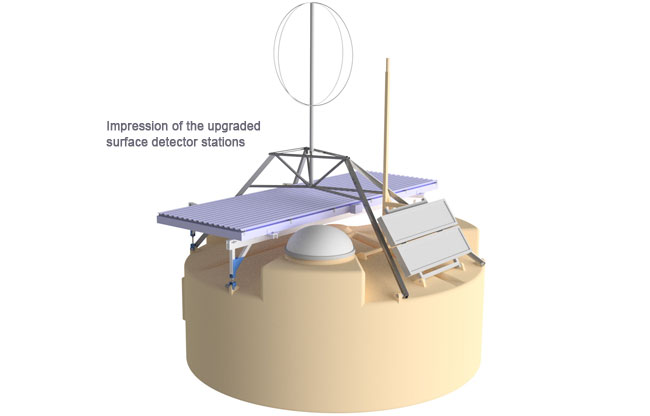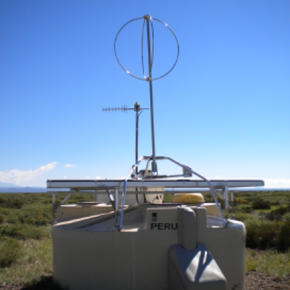Modernisation of the Pierre Auger Observatory nears completion
During almost two decades of observation, the Pierre Auger Observatory in Argentina has made significant advances in research into ultra-energetic cosmic rays. To boost its sensitivity and increase its potential for discoveries tenfold, the observatory has undertaken a complete overhaul of its 1,660 Cherenkov detectors, which should be completed by the end of 2023.
The scientists, engineers and technicians at the Pierre Auger Cosmic Ray Observatory in Argentina are carrying out a colossal and meticulous task. Covering an area of 3,000 km², the size of the Rhône department, they have been carrying out a major renovation called AugerPrime over the last ten years, involving the 1,660 Cherenkov detectors dedicated to the study of cosmic rays. The aim of this exceptional refurbishment is to considerably increase the observatory's sensitivity and focus future research on the identification of very high-energy cosmic particles.
Over the last two decades, the Pierre Auger Observatory has made major advances in the study of cosmic rays, particularly those of very high energy. Researchers have made some key discoveries, notably that ultra-energetic cosmic rays are associated with heavy and rare particles. For the most energetic events, they also found clues suggesting that they have an extra-galactic origin and showed that their distribution in the sky is not uniform. However, despite these advances, researchers still lacked sufficient statistical data to accurately characterise the particles at the origin of ultra-high-energy cosmic rays. This is why the AugerPrime rejuvenation project was launched.
The AugerPrime project concerns the 1,660 Cherenkov detectors. Each of these tanks of ultra-pure water has been fitted with plastic scintillators and is in the process of receiving radio antennae to enhance their detection capabilities. At the same time, improvements have been made to the electronics used to connect the new detectors and improve detection performance. These improvements also include better synchronisation with more recent GPS receivers and an increase in the data sampling frequency. These new devices will make it possible to separate the muonic and electromagnetic components of the signals received from the ground," explains Tiina Suomijärvi, research lecturer at IJCLab. This distinction is crucial for understanding the composition of ultra-energetic cosmic rays and perhaps their origin.

The installation of the plastic scintillators and the new electronics is already complete, and the upgrade will be fully completed by the end of 2023 with the installation of the last radio antennas. Data acquisition in full configuration will then be able to begin. The data will be collected over a period of years, given the rarity of the phenomenon observed: only a few units fall to the ground per km2 per year. But at the end of this new harvest, scientists hope to trace the origins of these unusual particles, which are probably accelerated by large cosmic accelerators.
More information :
To find out more about Pierre Auger observatory :
